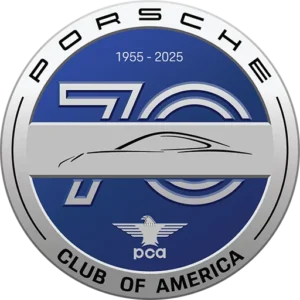If you’re going to be putting away your beloved Porsche for the winter weather, here are some areas to think about in regard to vehicle hibernation:
#1 Fluids
Ideally, it’d be best to have the oil/filter changed before you put the vehicle away for hibernation, AND THEN again when it comes out of hibernation in the spring. The reason for this is to get rid of any nasty contaminants/condensation in the oil before they sit in the engine/crankcase for the winter months (these contaminants/condensation could cause some minor engine corrosion), and then by changing at least the oil again in the spring after hibernation (you can probably skip the filter change in the spring since the filter hasn’t been used much save for 1 or 2 starts), you’re getting rid of any possible condensation that may have accumulated over the winter.
However, I understand that this process can be expensive due to the cost of high quality engine oil (either high Zinc content for aircooled’s, or full synthetic for watercooled’s). So, if I was given a choice to change the oil/filter only a SINGLE time, either before or after winter hibernation, it’d really come down to mileage on the current oil/filter. If you have considerable mileage (~1500-4000mi) and especially short trips on the oil/filter as you head into late fall, then I’d recommend changing the oil/filter before the car goes into winter hibernation. If you just recently changed the oil/filter in earlier fall (less than ~1000mi on it), then I’d recommend changing it again when the car comes out of hibernation as any condensation that builds up in the new oil during the winter will get burned off in the spring once you start driving.
What about other fluids like transmission, gear, power steering, clutch, windshield washer, and brake? The only fluid that might gather considerable worrisome condensation over the winter is the brake fluid. The amount of water content in your brake fluid can be checked with a fluid tester, and it should not have more than 2% water content in it. Like with the oil change now or later question, if the brake fluid has 3.5%+ moisture, it’d be best to flush/bleed the brake fluid before going into hibernation. If it has 2-3.5%, then after hibernation may be best.
Be sure to fill your fuel tank all the way to the top. This will save your fuel system from oxidation and will also displace any water that may currently be in the system. Be sure to add the fuel system stabilizer at the same time, following their specific direction.
#2 Pre-storage
The next step is to find a good clean, dry, secure location to store your car. A garage with a concrete pad is ideal. Start by cleaning out the interior of the car. Vacuum, dust, clean…the more spotless your car is, the better it will handle storage. This is essential to preventing mold, mildew and critters from overcoming your precious interior. You might put a bag or two of silica gel, which absorbs any moisture in the air, on the floorboards to keep the interior extra dry.
Once the interior is spotless, you should now focus your attention on the exterior of the car. Start by washing the car from top to bottom. Make sure to really clean the wheels well, as brake dust is very corrosive. However, do not put the vehicle away wet! This is tricky if you try to drive the car right up to that first heavy rainy or snowy day. You should never put your car away wet unless you want to encourage mildew, mold, and/or rust to form everywhere the water collects.
When you wash the car use this opportunity to make sure that all the drains work. It’s not uncommon for drains to clog up during the fall with leaves, debris, etc. There are surprisingly more drains in the car than you think.
After washing and drying the car, if you haven’t detailed your car in a while, give it a proper wax job if it’s not too cold in your garage, as high-quality wax can be difficult to apply when it’s cold out.
#3 Storage
When all maintenance and cleaning items have been covered, you are now ready to position the car for storage.
Persnickety tip; If you really want to go overboard, you can lay down a waterproof plastic drop-sheet where you will be storing the car. Before purchasing the plastic sheet, insure it is large enough to envelop the lower half of your vehicle. Park the car on the plastic drop sheet. The reason you should have a waterproof drop sheet is to prevent fluid transfers in both directions (ie prevent water vapor from rising from below the car, and prevent vehicle fluids from staining the cement storage pad). If you’re storing your vehicle outside, the plastic sheet will also help prevent lazy rodents from finding a nice winter nest up in your cabin filter area, engine bay, or interior. It might also be a good idea to lay a few non-poisonous rodent traps around if your vehicle can be easily accessed from outside, unless you have small children who will want to play with the traps. If you poison the rodents, they may then climb inside the vehicle and perish there, leaving you with a very nasty odor. Rodents are always looking for a cozy winter home and we have seen many client cars who have had nests built in their vehicle or engine bay. Your next step would be to tuck the plastic drop sheet up and around the bottom half of your vehicle. This once again prevents moisture from diffusing from underneath the car.
Once the car is in position, you can place the car on jack stands if you wish. The reasoning for this is two-fold;
1) it takes the strain off suspension components, thus slowing the aging on such components as bushings and shocks
2) it prevents your tires from developing “flat spots”
If you are not sure how to jack up your car, consult the vehicle manual for approved jacking points.
Regardless of jacking the vehicle up, we recommend inflating your tires to the maximum psi listed on the outer sidewall of the tire. Check the pressures, including spare, every few weeks to watch for any slow leaks.
Persnickety tip: Plugging the exhaust tips with steel wool will help prevent rodents and other critters from using your exhaust system as a winter home.
The next area to turn your attention too will be the vehicle’s battery. Most batteries do not winter well at all. All batteries discharge over time so you must ensure that your battery does not discharge too much, otherwise, it will age prematurely. The best solution to this problem is a special type of battery charger called a battery tender or maintainer. We prefer the CTEK brand, which Porsche private labels as their own. These battery-saving “smart” devices “float” a battery charge at a specific voltage vs constantly charging the battery blindly which can ruin it. $75 for a battery maintainer can save you from buying a $150+ battery every couple of years.
When you connect the battery tender to the battery, inspect for any corrosion (whitish crust) on the two battery terminal posts If you have any corrosion, you’ll want to clean it off with a fine brush.
Some of you may be wondering if, every few weeks, you should start your vehicle and allow it to run for a period of time. Starting the vehicle, letting it idle for 10min, and then shutting it off is not recommended. This start/idle/shutdown procedure will not allow the engine to reach optimal operating temperature to burn off contaminants in the system, like driving the vehicle for 30min+ will. Instead, this start/idle/shutdown procedure can create condensation in the system which can cause corrosion, contamination, and other issues.
At this stage, you’re almost done!
The last step will be to cover the car with a car cover if you have one, tucking the plastic sheet into the car cover. The ideal car cover for garage storage will be permeable and somewhat thick. Clearly the car should be covered to keep dust and sunlight from a garage window off of the vehicle. There are a large number of aftermarket car covers available. Don’t get the cheapest cover as it will be protecting your investment!
That’s it, you’re done winterizing your beloved Porsche. After a few months, your car will be ready to run free once again.
Feel free to post here with any specific hibernation questions.
Very happy holidays to you and yours!
Jeremy Williams is the Oregon PCA Technical editor. He co-owns Matrix Integrated Inc. (Matrix Integrated Inc.) with his brother Justin. Jeremy can be reached at [email protected]







